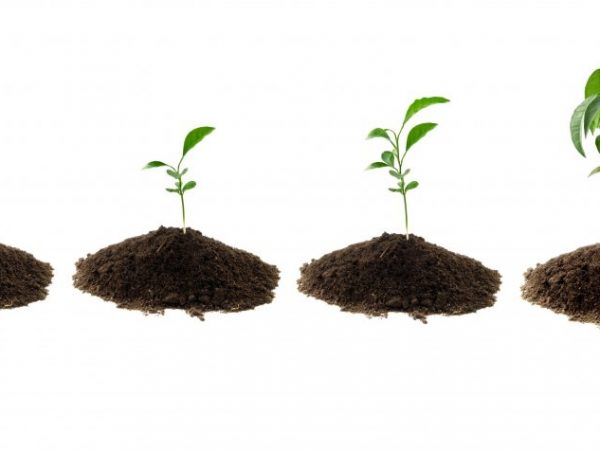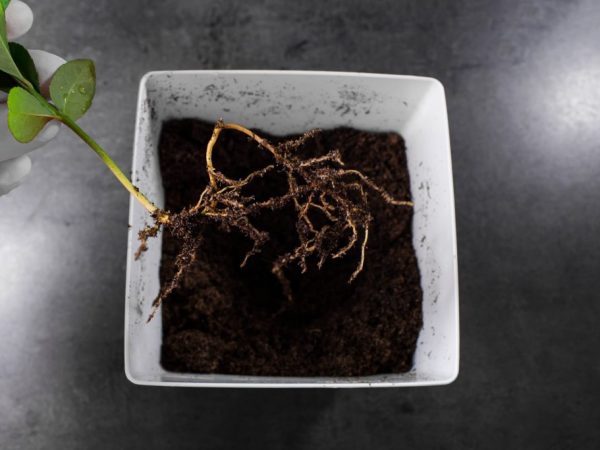Lemon transplant at home
Lemons are some of the most popular home-grown plants. They are unpretentious in care, tolerate all climatic conditions normally, and are also rarely exposed to diseases. Transplanting a lemon into a new pot is carried out to prevent and stimulate development.

Lemon transplant at home
When there is a need for a transplant
The need to transplant lemon at home appears when you need to saturate the roots with useful substances, which are not enough in the old soil. Evidence of this is the emergence of roots from the drainage holes in the pot.
Homemade lemon transplant is carried out:
- after the purchase;
- with a disease of the root system;
- when roots appear around a tree;
- with a decrease in the number of fruits;
- when the pot is broken.
Once purchased, the lemon sapling is transplanted into a new larger pot to stimulate the development of the tree. Diseases of the root system are forced to transplant an adult plant due to the unsuitability of the land. The disease causes an excess of the introduced moisture, which stagnates and swamps the soil, which stimulates the appearance of infections on the tree and fruits.
If roots stick out from the ground around the trunk, this indicates a lack of space for root development. In such cases, the lemon is transplanted into a larger container with renewed soil. Depletion of the soil is evidenced by the deterioration in yield.
Choosing a container for growing
It is better to transplant a lemon at home into a pot 2-3 cm in diameter larger than the old one. For trees over 6 years old, containers with a large neck and narrow bottom are preferred. Young plants develop in cylindrical pots.
Lemon does not like too much moisture in the soil. For him, containers with drainage holes are chosen.
Varieties
Classification of pots by material:
- Plastic. The material is not able to absorb moisture, which provides the roots with an abundance of nutrients. When transplanting into a new plastic pot, 4-6 cm of drainage is left at the bottom. It is better to take containers made of dark material. If the pot is light or transparent, wrap it in a black cloth. If this is not done, the ground will be covered with moss and the lemon will get sick.
- Ceramic. Suitable for a houseplant, but before replanting citrus, the container is soaked in warm water for 2-3 hours. This helps to retain moisture in the soil.
- Wooden. For indoor lemon, pine and oak are ideal materials. The rocks do not absorb moisture and resist the appearance of purulent formations. Wooden containers are chosen, if necessary, to transplant an adult large plant into another pot. From the inside, the material is fired to produce charcoal, which further stimulates growth and disinfects the soil.
Soil selection

You can prepare the soil yourself
For growing indoor lemon use:
- soil for citrus;
- flower soil;
- humus soil;
- soil with mineral fertilizers and ash;
For self-production of soil for indoor citrus fruits, you need:
- soil treated with herbicides and pesticides;
- manure, humus or deciduous soil;
- sifted river sand.
The components are mixed in equal proportions. Also, when transplanting into another pot, the soil is fertilized with nitrogen, phosphorus and potassium fertilizers. For the first 3-5 months, no additional substances are added to the soil. After that, mineral fertilizers are applied without chlorides.
Drainage
The purpose of drainage is to control moisture in the soil. If the lemon is transplanted into a ceramic pot with one holes, a ceramic shard is placed on the bottom with the concave side to the bottom to remove moisture. This will leave the hole always open.
River sifted sand is also an effective component for creating drainage. It is kneaded into the soil before being transplanted into a new pot. The sand allows moisture to pass through itself and prevents stagnation of water.
Expanded clay has the ability to absorb liquid. These are small stones made of baked clay. When transplanting citrus, expanded clay is poured into a container to a height of 5-6 cm from the bottom. Also, stones are taken with the ground in equal volumes and mixed. This improves the circulation of not only water, but also oxygen in the soil.
Transplanting
To properly transplant a lemon at home, you need to follow these rules:
- replant in spring or autumn;
- remove dry and damaged roots;
- do not transplant the plant with fruits or wait until they ripen;
- determine the time according to the lunar calendar;
- do not cover the root collar with earth;
- after transplanting, water the tree and put it in the shade for a day.
Instructions
Sequence of carrying out
- Drainage is poured into the bottom of the new pot. The maximum height is 20% of the total container size. A small layer of sand is also added on top to drain excess water from the roots.
- The tree is removed from an old pot with a clod of earth. If the root system has grown too much, it is reduced, and the pruning site is treated with growth stimulants.
- A layer of soil is poured into the container and the plant is placed. The roots are located below the throat. The tree is covered with soil from all sides.
- The soil is compacted and moisture is introduced. For this, clean settled water is used. A few days after getting used to it, the soil is loosened for better oxygen penetration to the roots. At this time, the plant is treated with chemicals from pests.
To get used to it, the lemon is placed in a dark room for several days. After transplanting and getting used to it, pruning is carried out. Dry segments are removed and a crown is formed. This enhances plant development and increases yields.
Conclusion
If you follow all the rules for transplanting indoor lemon, the plant grows faster and gives more fruits. Also, strong plants resist pests better, and lemons become more juicy.
Caring for a houseplant requires constant humidification of the air around the tree. To do this, it is pollinated 3-4 times a week. A suitable temperature for wood is 18-20 ° C.


